Turns out there is a connection between the city of Cologne and the generic term for scented water.
We visited the museum and historical house of Johann Maria Farina dedicated to the perfume maker and his product: the original water, “Eau de Cologne.” Back in those days, French was the language of the aristocracy and commerce, so those doing business in Europe would have been doing so in en français.
A new meaning to “showering in the stuff”
It was also a time with little to no recognizable hygiene practices. After the plague, whole European societies avoided water because of its ability to spread illness. They did not know that boiling water would kill many germs, so best practice was to stay away from it.
In other words, people avoided bathing. Thinking about months with no shower=gross. Thinking about the ensuing stench=gross².
No surprise here: everyone who could afford it used perfumes to help mask the foul funk.
Johann Maria Farina grew up in Italy, but moved to Cologne in the very very early 1700s. He dreamed up a signature perfumed water that reminded him of his homeland, writing, “I have discovered a scent that reminds me of a spring morning in Italy, of mountain narcissus, orange blossom just after the rain. It gives me great refreshment, strengthens my senses and imagination.”
Ethereal Creation
When I think of “cologne” the too-heavy, artificial-smelling, noxious spray comes to mind. Farina’s Eau de Cologne could not be any further from this! The Farinas describe the scent profile’s “Olfactory pyramid” as:
Head: Bergamot, Lemon
Heart: Galbanum, Jasmine, Violet
Base: Sandalwood, Cedarwood, Musk
Contrary to most first inclinations perfume makers do not sit in a lab and mix scents together in a lengthy experiment in order to find the right combination. That would be wasteful and constant close contact with such strong scents can actually kill the olfactory receptors. No. Like the magnificent scents the perfume makers create, they’re ethereal about it. They invent new scent combinations in their imaginations.
Johann Maria Farina had an “absolute nose.” Think of “absolute pitch”—the ability to think of and recreate any pitch exactly—and that is pretty much what he could do with any scents he smelled at least once. Even more impressively, he could imagine how it would smell mixed with other scents. Our tour guide described that he would have been able to do this for 20 to 30 scents at a time!
As amazing as this innate skill is, the real revolutionary aspect of his cologne is how he distilled the alcohol completely. No one had done this before, and any impurities in alcohol leave behind a scent of their own. A heavy fragrance can overpower scents from the alcohol (along with any nostrils in the vicinity), but then you’re stuck with only heavy smells. With 100% pure and odorless alcohol, the foul-funk afflicted could now enjoy lighter more subtler scents, for the first time. The original and timeless Eau de Cologne is, in fact, made up of light scents only.

What’s aromatic relief worth?
A bottle of Eau de Cologne costed half a year’s wages for the average working class individual.
Luckily for Farina, there were many royals and other elites willing to pay about any price for some fragrant relief from the horrors of B.O. mixed with raw sewage. He kept meticulous records of his production and sales, from this we know that his Eau de Cologne was worn by just about every monarch in Europe (from Queen Victoria to Ludwig II to Napoleon—who used a bottle a day!), as well as artists such as Mozart, Balzac, Voltaire, Wilde, and Twain.
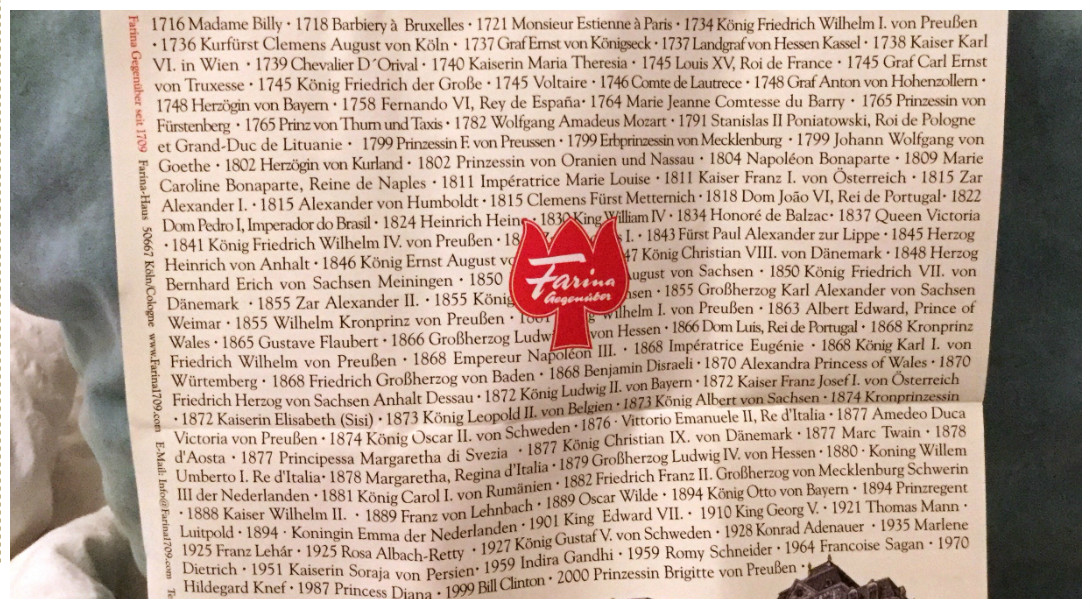
Travel was much more arduous in the 1700s, so buyers would often spend the night after come to the Farina-Haus. They’d be greeted with elaborate Rococo furniture, champagne and fancy treats in the sales room.
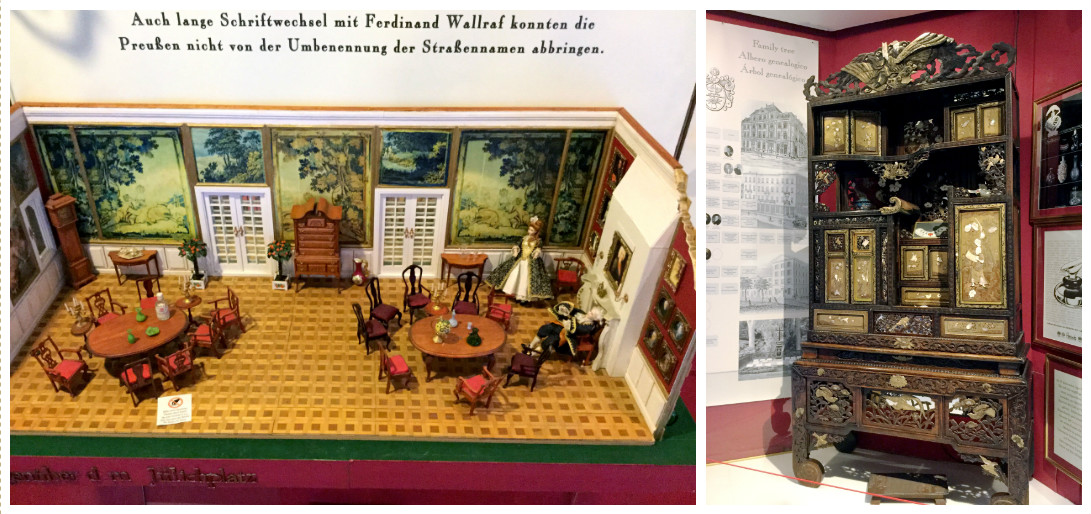

Farina chose a tulip as the brand symbol because in his time, they were only found in the gardens of Turkey and were very literally worth their weight in gold. He signed every single label, and they were manually sealed (obviously). Not only did the careful attention to detail and luxurious character help with marketing, it was helpful to distinguish itself from competitors.
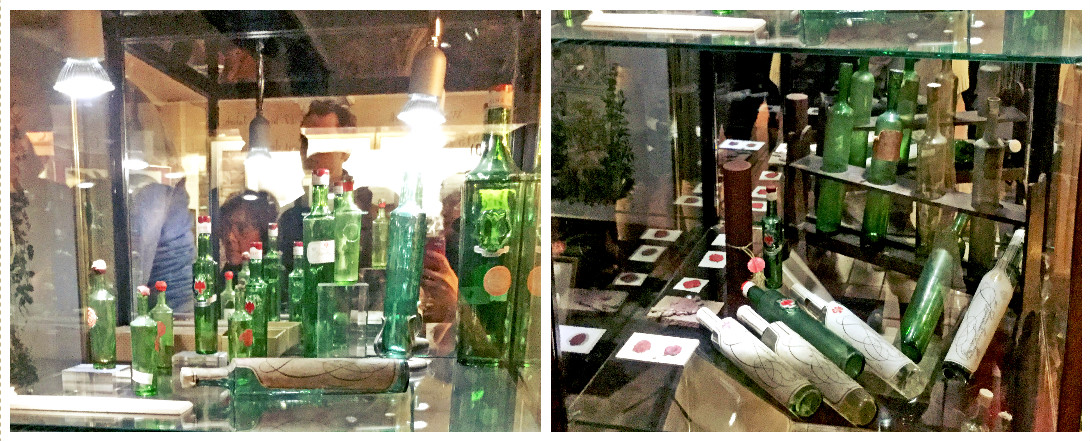
The Original: Eau de Cologne 1709
The recipe for Farina’s specialty product is written in book with a metal lock around the whole book, like a book-tight cage. As an even heavier precaution, the recipe is written in a code using latin imperial names for the ingredients (for example, “Brutis” could mean “Bergamont oil” and so forth). Only the perfume makers themselves knew the code, and they passed it down from person to person.
There are many imitators, but this guy was the original. It turns out that someone named Muelhens found another guy with the name Farina (completely unrelated to Johann Maria) and paid him for the rights to use his same name for his own fragrant waters.
Though an eventual legal dispute removed the Farina name from the imitator’s product, Muelhens was doing so well financially he continued with his business, producing what he called “Original Eau de Cologne, No. 4711” named after the building his shop was housed in at the time. Believe it or not, this cologne is just as, if not more famous, than the true original.
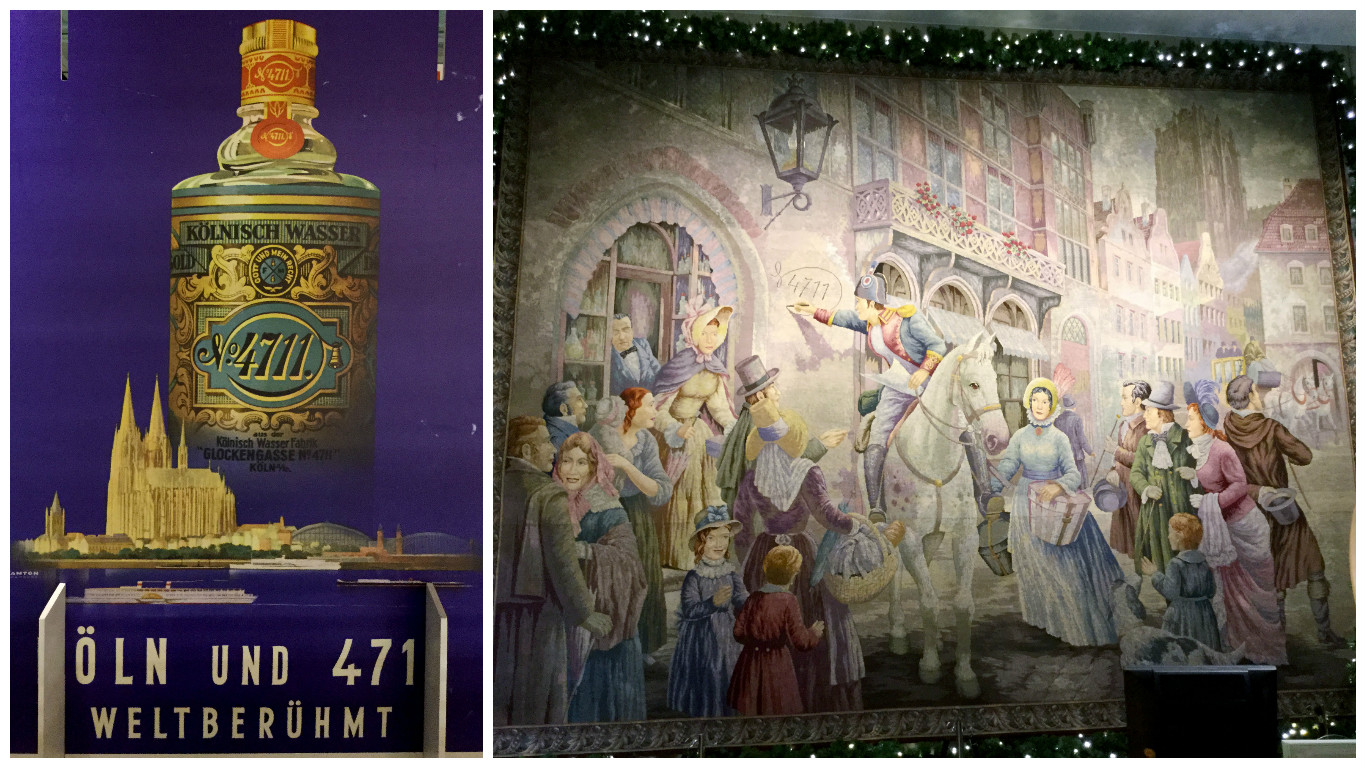
We stopped by No. 4711 after the Farina-haus, but were not impressed. They had a small historical section with advertisements and bottles, as well as this enormous wall-sized stitch-work piece showing when the houses were numbered and when the company received its “No. 4711” from the government. The scent of their classic perfume was not as pleasant as Farina’s, it smelled more artificial, and reminded me of what I think of when I hear the word “cologne.” I guess that could be why it’s so famous.
Their name, marketing, and neon-presence help maintain their reputation. Walking around Cologne I noticed many signs for No. 4711, and even heard their working glockenspiel before spotting the original building. Still, it’s definitely worth the hunt for the Farina-haus original. It’s light fragrance is incomparable. If you’re extra lucky, you might be able to book a tour for more history too.
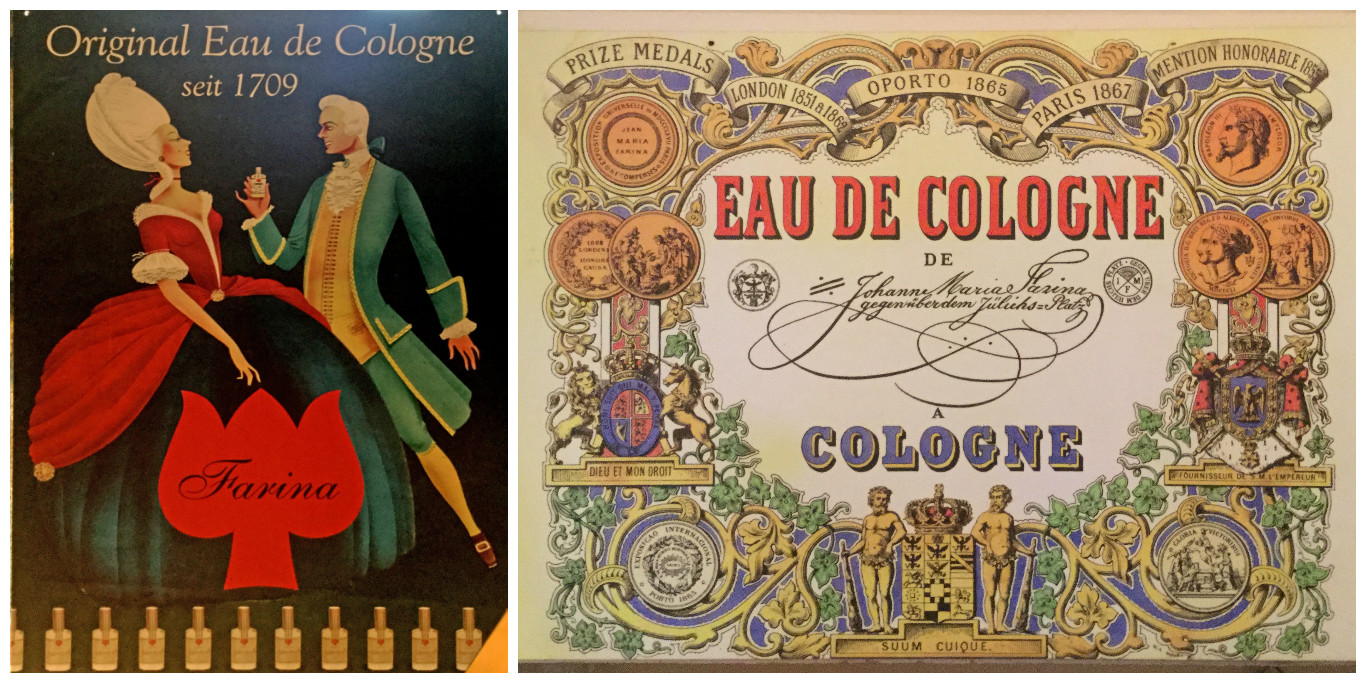
it smells nice just by the description
Awesome and amazing, Mr. Farina. Never knew.